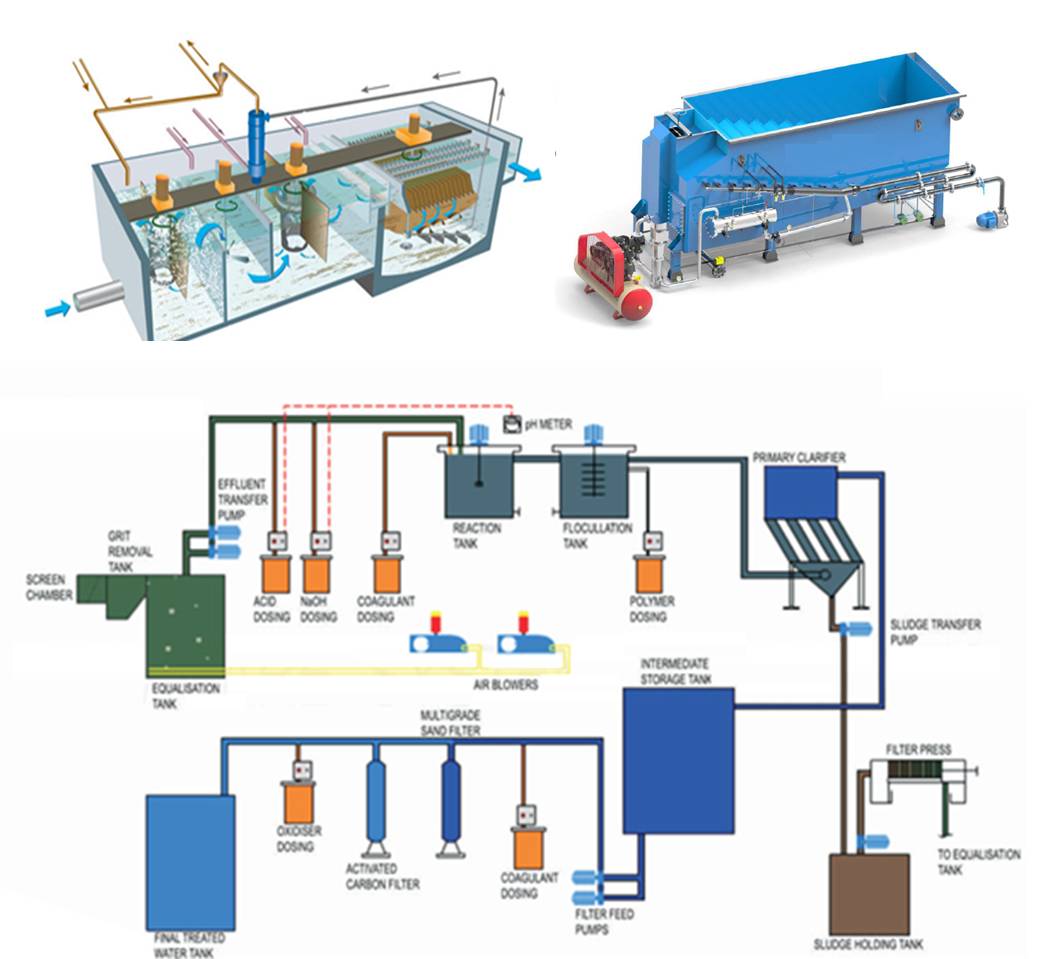Design criteria for Mechanically Cleaned Setting Tanks of wastewater treatment manufacturers
As per wastewater treatment manufacturers the Inlets shall be designed to dissipate the inlet velocity, to distribute the flow equally and to prevent short-circuiting. Channels shall be designed to maintain a velocity of at least one foot per second (30 cm/s) at one-half design flow and to distribute the flow proportionately between parallel units. Corner pockets and dead ends shall be eliminated and corner fillets or channeling shall be used where necessary. Provisions shall be made for easy removal of floating materials in inlet structures having submerged ports.
Scum Baffles – wastewater treatment manufacturers also suggest to provide scum baffles ahead of outlet weirs. Baffles shall be constructed of plate steel or other suitable material.
Weirs – Overflow weirs shall be constructed of plate steel or other suitable material. Weirs shall be properly supported and fully adjustable. Multiple weir troughs shall be placed sufficiently far apart to avoid excessive upward velocity between the troughs.
Protective Devices – All settling tanks shall be designed to provide easy access for maintenance and protection to the operator. Such features shall include stairways, walkways and handrails.
Surface Loading Rates – Surface loading rates for mechanically cleaned setting tanks shall not exceed 600 gallons per day per square foot (24 m3 /m2 d) under average flow conditions nor shall the surface loading rates exceed 3000 gallons per day per square foot (122 m3 /m2 d) under peak conditions as per wastewater treatment manufacturers.
Scum Removal – Provisions shall be made for automatic equipment for scum removal. Provisions shall be made to discharge the scum with the sludge.
Sludge Removal – Removal of sludge from primary settling tanks shall be by direct pump suction. A sludge well shall be provided. All sludge hoppers shall have an individual valved sludge withdrawal line at least 3 inches (7.6 cm) in diameter.
Depth – The liquid depth of mechanically cleaned settling tanks shall not be less than 8.0 feet (2.441.82 m).
Diameter – The diameter of primary settling tanks shall not be less than 8.0 feet (2.4 m) as per wastewater treatment manufacturers guidelines.
Tank Material – Primary settling tanks shall be constructed of reinforced concrete or structural grade steel. Steel tanks shall be adequately protected from corrosion through the use of appropriate coating material. Cathodic protection shall be provided for all buried steel tanks.
Foundation Pad – A poured reinforced concrete foundation pad of sufficient design to withstand the structural load of the settling tank under peak operating conditions shall be provided as per wastewater treatment manufacturers. The foundation pad shall be flat and level. If steel tanks are used, anchoring devices shall be provided to properly secure the settling tank to the foundation pad.







